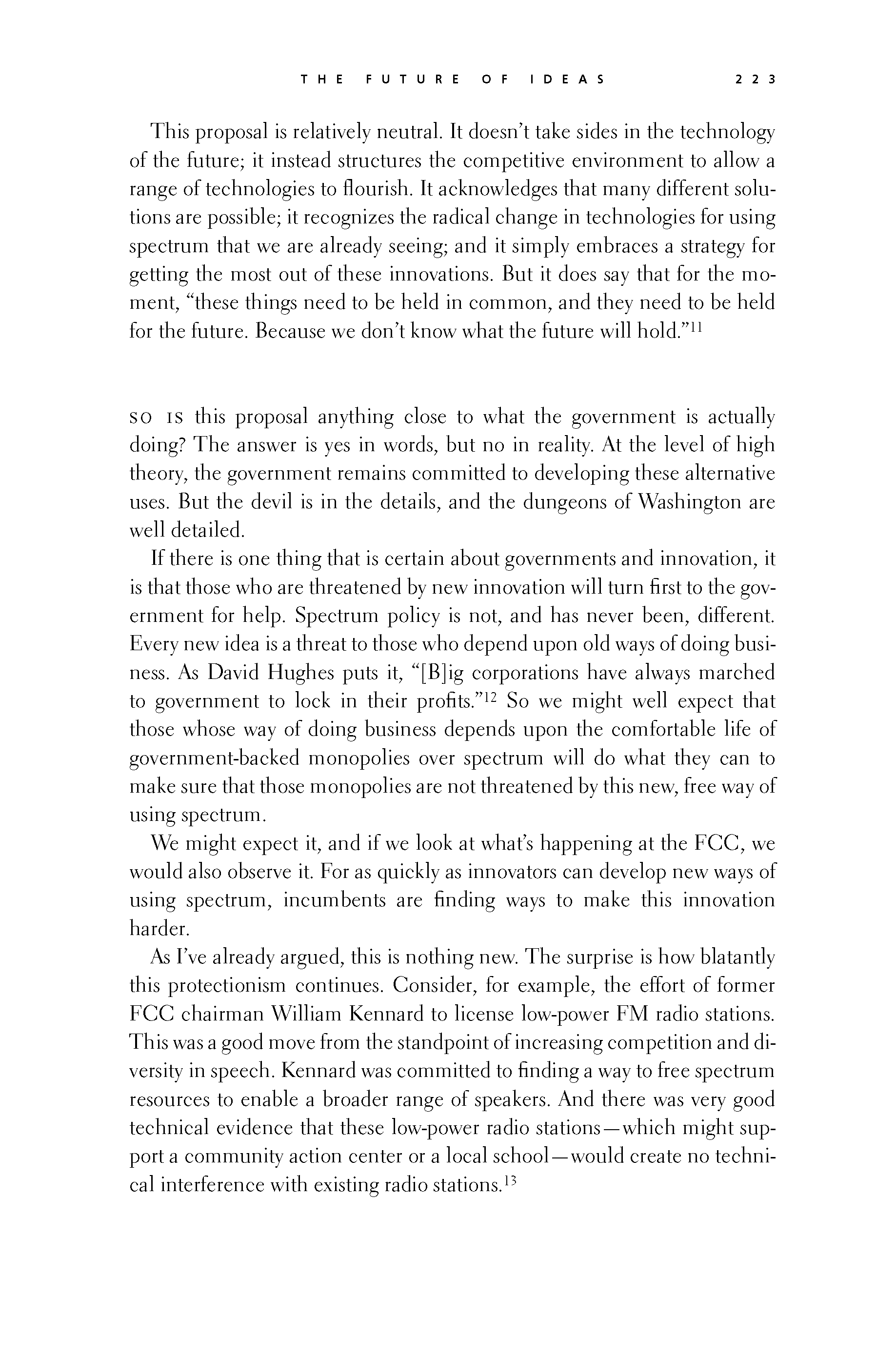 p222 _
-chap- _
toc-1 _
p223w _
toc-2 _
+chap+ _
p224
p222 _
-chap- _
toc-1 _
p223w _
toc-2 _
+chap+ _
p224
____ This proposal is relatively neutral. It doesn't take sides in the technology
____ of the future; it instead structures the competitive environment to allow a
____ range of technologies to flourish. It acknowledges that many different solu-
____ tions are possible; it recognizes the radical change in technologies for using
____ spectrum that we are already seeing; and it simply embraces a strategy for
____ getting the most out of these innovations. But it does say that for the mo-
____ ment, "these things need to be held in common, and they need to be held
____ for the future. Because we don't know what the future will hold."[12-11]
///\\\
So is this proposal anything close to what the government is actually
doing? The answer is yes in words, but no in reality. At the level of high
theory, the government remains committed to developing these alternative
uses. But the devil is in the details, and the dungeons of Washington are
well detailed.
If there is one thing that is certain about governments and innovation, it
is that those who are threatened by new innovation will turn first to the gov-
ernment for help. Spectrum policy is not, and has never been, different.
Every new idea is a threat to those who depend upon old ways of doing busi-
ness. As David Hughes puts it, "[B]ig corporations have always marched
to government to lock in their profits."[12-12] So we might well expect that
those whose way of doing business depends upon the comfortable life of
government-backed monopolies over spectrum will do what they can to
make sure that those monopolies are not threatened by this new, free way of
using spectrum.
We might expect it, and if we look at what's happening at the FCC, we
would also observe it. For as quickly as innovators can develop new ways of
using spectrum, incumbents are finding ways to make this innovation
harder.
As I've already argued, this is nothing new. The surprise is how blatantly
this protectionism continues. Consider, for example, the effort of former
FCC chairman William Kennard to license low-power FM radio stations.
This was a good move from the standpoint of increasing competition and di-
versity in speech. Kennard was committed to finding a way to free spectrum
resources to enable a broader range of speakers. And there was very good
technical evidence that these low-power radio stations -- which might sup-
port a community action center or a local school -- would create no techni-
cal interference with existing radio stations.[12-13]
[[223]]
p222 _
-chap- _
toc-1 _
p223w _
toc-2 _
+chap+ _
p224